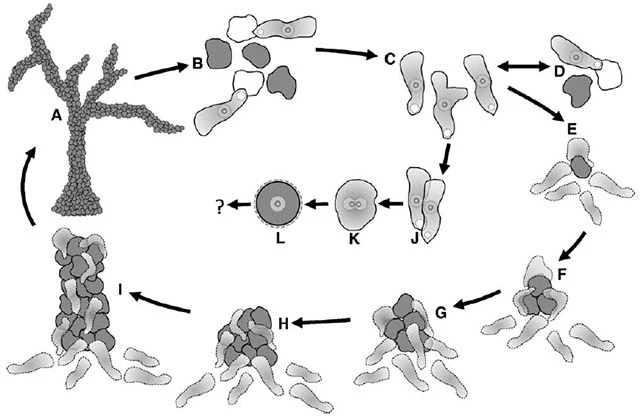
Genus Copromyxa Zopf, 1885 emend. Brown, Silberman and Spiegel 2011
Diagnosis: Amoebae in active locomotion typically monopodial in form with a well-pronounced hyaline cap and a round to tapering uroid. Uroid not differentiated, but often adhesive filaments form. Locomotive amoebae limax in form, but not eruptive; length/breadth ratio mean approximately 4. Normally a single vesicular nucleus with a single nucleolus. Cysts known to form in all species, smooth walled, spherical, ovoid, or irregular in shape. One species known to fruit via aggregation and differentiation of amoebae into columns or arborescent masses of irregularly shaped, walled sorocysts. A possible sexual cycle involving thick walled sphaerocysts reported for some strains of the fruiting species.
Type species: Copromyxa protea (Fayod, 1883) Zopf 1885
Ecology: Dung-inhabiting amoeboid
Literature:
Brown, WM, Silberman, JD, Spiegel, FW: “Slime Molds” among the Tubulinea (Amoebozoa): Molecular Systematics and Taxonomy of Copromyxa. Protist, Vol. 162, 277–287, 2011